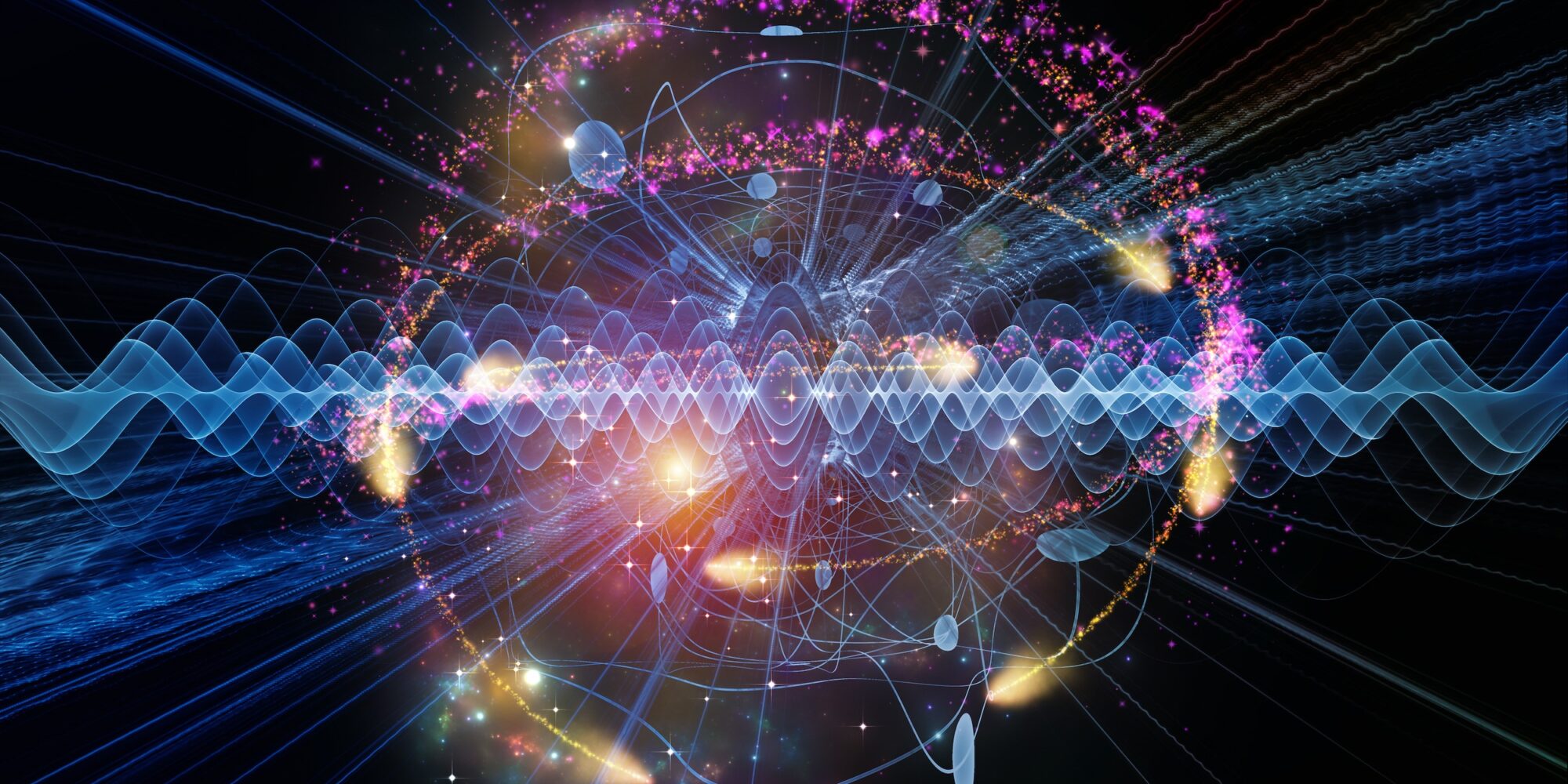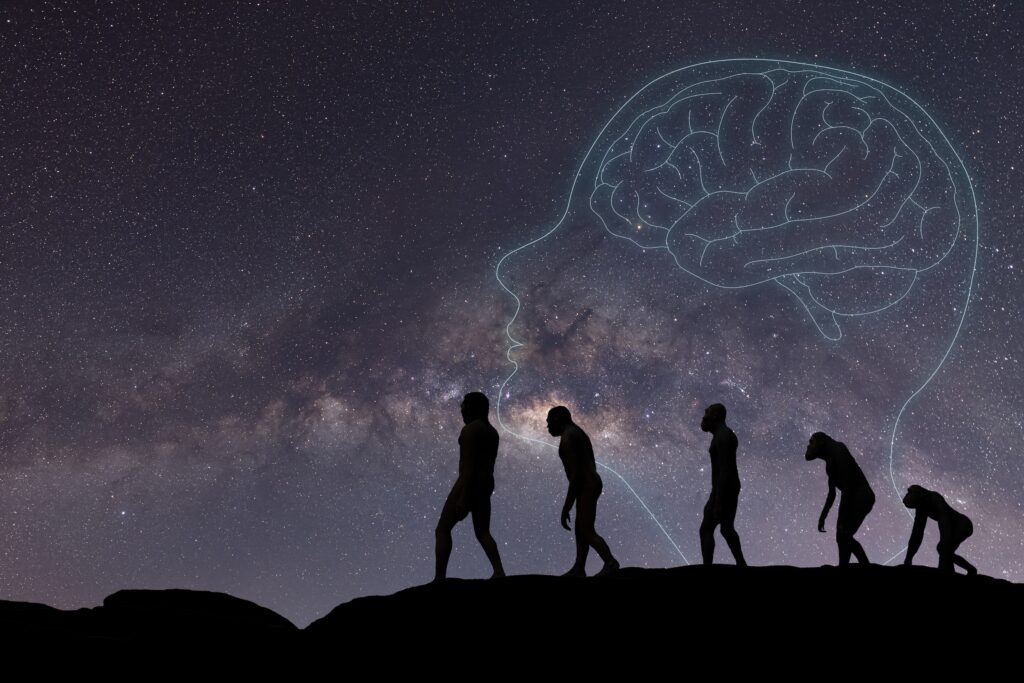The ghost in the shell
Reading | Metaphysics
![]() Grace Endries | 2023-08-20
Grace Endries | 2023-08-20

Quantum physics forces us to recognize that consciousness is inherent to a unitary, semantic order at the foundational level of reality, which presents itself to us as matter, argues Grace Endries. Her approach brings together neuroscience (namely, Integrated Information Theory) and quantum mechanics (namely, David Bohm’s Implicate Order) and proposes a causal relationship between consciousness and wave function collapse. We believe that Endries and the research program she is following are on the right track. But we consider unhelpful their insistence on redefining the terms ‘panpsychism’ and ‘matter’/’materialism’ in a manner that bears no resemblance to the actual meanings of these words. In Endries’ approach, matter is neither purely mathematical nor fragmentary; so why use the word at all? What is fundamentally conscious is a unitary implicate order at the foundational level of reality, which implies that her approach is much closer to what we call ‘cosmopsychism’ or ‘objective idealism’ than to panpsychism—as it faces no combination but only a decomposition problem—so why insist on the wrong word? We know that this isn’t done out of malice, but perhaps a desire to conform to mainstream expectations. Nonetheless, we believe that doing so renders ‘materialism’ and ‘panpsychism’ true by mere word redefinition, and contributes to confusion. If what one is proposing is neither materialism nor panpsychism as generally understood, then one shouldn’t call it so.
Introduction
The relationship between consciousness and metaphysics is as old as the discipline of philosophy. Ancient philosophers saw no distinction between the two and often used consciousness as a foundation for understanding the larger phenomena of existence. This speaks to a relic of thought that we have not yet been able to do away with: the firm insistence on consciousness as something, and moreover, something through which we are able to understand the world. The divorce between psyche and science is a more recent invention; philosopher Philip Goff identifies the split in the paradigm shift proctored by Galileo Galilei, who postulated that we might know the world through exclusively empirical methods by declaring math the language of the universe. Predating DeCartes, Galileo’s assertion effectively diminished the qualitative properties of life to the consciousness of each individual, separating the objective from the subjective, and opening the door for a dualistic worldview. [1]
This trajectory has proved incredibly fruitful in producing profound understandings of the mechanisms of the world and influencing technological advancement as well as schools of thought. However, as the pendulum swings back to a place where we seek to understand the human psyche, soul, or, as Stephen Hawking articulates, the fire in the equation, we find that our empirical methods are lacking. The work of 20th century mathematician and philosopher Bertrand Russell is receiving a contemporary revival as we grapple with the failure of the standard empirical methods to produce a convincing or substantive theory of consciousness. Russell’s observations about the scientific methodology speak to the inability of our methods to probe exactly the essence of something (in the broadest sense), instead categorizing with increasing specificity the “extrinsic, relational, mathematical, or dispositional nature of matter … leav[ing] us in the dark about its intrinsic, concrete and categorical nature.” [2]
This criticism of physical science is extremely attractive to cognitive scientists and philosophers unsatisfied with the reductive or dismissive theories of consciousness that have been put forth so far. It’s becoming more and more difficult to see a route to understanding consciousness through research into neural correlates. Sensational, phenomenal experience underpins all of the functions of the mind that we have so far mapped. Case studies on patients with brain damage do not yield results that identify the locus of consciousness. Sensation of phenomena does not seem to cease at a particular point in the chain of evolution. Most recently, research in quantum mechanics has provided evidence that consciousness may in fact be ubiquitous, with quantum molecules displaying “mind-like qualities.” [3] Both fields have reasons why an integration might yield fruitful results in investigating fundamental reality. Biologist J.B.S. Haldane articulates the need for research into this intersection: “if the scientific point of view is correct, we shall ultimately find [signs of consciousness in inert matter], at least in rudimentary form, all through the universe.” [4]
Quantum mechanics makes the ancient theory of panpsychism infinitely more attractive. This is because of the necessitated ontological paradigm shift owing to the discoveries of quantum mechanics. Physicist Robert Jahn argues that “three mysteries … call out for clarification: the quantum, the universe, and the mind. All three lie at that point where, in the phrase of Fred Hoyle, ‘mind and matter meld.’ All three threaten that clear separation between observer and observed which for so long seemed the essence of science.” [5] There are areas in physics that will likely not yield to increasingly powerful methods of probing; it is becoming clear that they must be interpreted rather than deconstructed. Quarks, broken down, can best be interpreted as events. Quantum waves are potential. It becomes increasingly clear where mind and matter must rejoin once again. Quantum physics makes this obvious, and its synthesis with a panpsychist view of nature provides the framework for how to do so.
Quantum physics yields itself to just as many interpretations as the phenomenon of consciousness. However, I argue that it provides a framework from which we can model the new investigations into consciousness, following its guidance and working within its necessary ontological reorientation. From quantum mechanics, we learn about the fundamental nature of reality and the ways in which consciousness interacts with it. From this it follows that consciousness is a fundamental element of reality, and our methodologies for engaging it must accommodate this.
Definitions
When discussing the issue of consciousness, it is of the utmost importance to operate with precision. I will operate off the following assumptions within this work and would like to establish a common ground from which I and the reader can communicate. For the purposes of this work, please recognize the following definitions:
Physicalism: I recognize this term as a general shorthand for hard materialism, which is a somewhat all-encompassing term. As Goff’s work explicates, this is the advance of the scientific methodology of Galileo in attempting to understand the world through exclusively empirical methods, and subsequently seeing consciousness as an individual phenomenon that emerges from physical mechanisms. This also refers to the ontological theory transposed onto reality, proposing that we can understand the world solely through the measurable systems we have constructed.
I want to stress the difference that I perceive between physicalism and materialism. Physicalism, or hard materialism, is a reductive ontology that opens the door for dualism. Dualism has long been rejected as a theory of consciousness, but David Chalmers argues that its intuitive attractiveness is enough of a reason for us to take it seriously. [6] This is because the natural consequence of physicalism, at a standstill in the face of the emergence problem, is to practice extreme reductionism to the point of dismissing the phenomenon of consciousness altogether. The reluctance to accept this is due to the intuitive knowledge that we all carry of subjective, conscious experience.
Furthermore, as identified in the Russellian approach to physical science, we are unable to probe sensation, meaning, or experience through physicalism and this feels intuitively incorrect. It covers no ground in explaining why we have experience at all, and instead pushes research further down a trajectory that denies the existence of a subjective dimension of reality. Research in neural correlates can explain why redness produces an emotional reaction in an individual, but it cannot explain why one experiences red at all. Even more fundamentally, what is the experience of red?
Materialism, as an epistemological method, is not incompatible with the understanding of quantum mechanics except in its hard form of physicalism. This is why the integration of quantum physics can bring us closer to understanding consciousness; it merely warrants an expansion of definition of the nature of physical reality.
Materialism: I find it necessary to differentiate between physicalism and materialism. Materialism is the doctrine that matter is fundamental, and knowledge is exclusively advanced through studying matter’s movements and modifications. This is different from physicalism as referred to in this work when we understand the reason why many panpsychist philosophers refer to themselves as materialists. Panpsychism is a theory that posits consciousness as a fundamental feature of reality, and it can be measured through physical systems but not explained by them in essence. Materialism, similarly, is an ontological theory. However, for the purposes of this essay, it is different to physicalism in that it expands its definition of the fundamental nature of matter to encompass the features of consciousness that evade reduction. This view is not anti-scientific when assessing consciousness. Rather, in its investigations of consciousness it advances based on the understanding of fundamental reality using the difficulties encountered in cognitive science as evidence for the new view of the world. When these difficulties are interpreted with quantum theories, such as Bohm’s implicate order and active information, we develop a more precise understanding of the true nature of reality.
Consciousness: Obviously there have been tomes written attempting to explicate this particular term, and interestingly enough, the more information produced on the subject, the less we are able to communicate about it clearly. So, please indulge my particular definition despite its potential inconsistency with the reader’s personal beliefs. When referencing the phenomenon of consciousness, I am specifically referring to consciousness as a fundamental element of reality. This is to say, it operates ubiquitously. This is differentiated from merely appealing to different functions of the human brain, because consciousness operates within them. Particular functions that are often attributed to or associated with conscious awareness can be understood as developed through the evolutionary process. Ultimately, and I recognize that this is a contentious proposal, consciousness can be understood as a fundamental element that produces experience, and through which we are able to derive meaning or understanding. This is consistent with David Bohm’s theory of active information as a fundamental, intrinsically semantic force that animates the waves of matter encountered in quantum physics. [7]
The view from down here
Embracing a Russellian monist perspective requires much more than a progression of the same old methods utilized by cognitive science . The results produced thus far in cognitive science’s search for consciousness reveals this to us in a rather abrupt manner. Ultimately, the study of consciousness exposes the need for a fundamental ontological reorientation. And while attractive for calling out lapses in our understanding, Russellian monism can also provide a direction for research to proceed. Even so, Russell’s contribution to the study of consciousness is particularly important when merging the endeavor with quantum physics. He famously wrote: “Physics is mathematical not because we know so much about the physical world, but because we know so little: it is only its mathematical properties that we can discover.” [8] Consciousness requires an expansion of our scientific methods, as we still should strive for a scientific approach when seeking to understand consciousness. David Bohm’s theory of implicate order can provide us a framework to do so and invites integration of many theories of cognitive science.
Bohm’s theory of implicate order necessitates a panpsychist view of the world. Similar to the understanding that produced William Kingdon Clifford’s “mind-stuff,” both theorists sought a parsimonious theory of fundamental reality. Clifford identifies:
A parallel between physical and mental facts, arguing they must obey the same laws: since both the object perceived and the brain that produces a cerebral image of the same object (on the optic ganglion) are made of the same substance or matter (though not the same matter obviously), and since the picture that I have in my mind of the object outside me is made of simple mental facts, so the object outside my consciousness must be made of like stuff or “mind-stuff.” [9]
Admittedly, the term “mind-stuff” has the tendency to raise eyebrows. However, when understanding consciousness and its role in the implicate order, its overlap with Bohm’s conception of active information is entirely useful. To Clifford, “there must exist ‘elementary ejective facts’ in every organism.” [10] To Bohm, even the quantum elements have mind-like qualities. The information that exists at the quantum level of reality is what organizes and moves the matter: Its collapse at the point of interaction with consciousness produces subjectivity.
Russell’s critiques about physical science are perhaps answered by Bohm’s theories as he searched for a unified whole. Bohm’s theory posits meaning as fundamental to the universe, conceptualized as active information. Bohm resents the theory that our fundamental elements are separate, and instead posits a fundamental reality from which active information emerges and forges the structures that we experience. This interpretation of quantum mechanics diverges from classical physics, which believes that the “structural features of reality” are fundamental, as opposed to Bohm’s identification of “something which underlies the structure which physics investigates.” [11]
Ultimately, the entire universe (with all its “particles,” including those constituting human beings, their laboratories, observing instruments, etc.) has to be understood as a single undivided whole, in which analysis into separately and independently existent parts has no fundamental status.
What follows from Bohm’s ontological theory is a relationship between consciousness and fundamental reality: “Mental states are the terminus of interpretation and seem to be the only carriers of information which is intrinsically semantic.” [12]
Ultimately, this interpretation of quantum mechanics posits meaning to be a fundamental element of reality. Bohm’s active information is not local, or not confined to the individual psyche. It is intrinsically semantic, as opposed to the “syntactic or structural information” that we generally understand as knowledge. Active information “underpins the system of physical relations,” and “actively [puts] form into something.” [13] This fundamental system of semantics animates the function of consciousness. Active information is the mechanism that gives form to matter and organizes waves of potentiality. It underlies and is inseparable from potentiality. This worldview is fundamentally material, however it reveals how material must take on a new definition.
Bohm provides a theory about intricate wholeness and how consciousness must be operating at the quantum level. This was hypothesized in his search for a parsimonious theory of nature. When we apply this lens to the study of consciousness, we see that neither hard physicalism nor dualism fits this criteria. Instead, we need the new definition of materialism that understands consciousness as a fundamental force.
The significance of this relative to investigations in consciousness is not one that can posit an equation or point to a locality, or even describe with specificity what this elusive mind-stuff is. However, Bohm found the most compelling evidence in the need for homogeneity at the fundamental level. To engage consciousness as a fundamental element entails a physical system that understands the relational aspects of consciousness in the same way that classical physics understands the relational aspects of gravity.
Roger Penrose raises the challenge: “A scientific worldview which does not profoundly come to terms with the problem of conscious minds can have no serious pretensions of completeness. Consciousness is part of our universe, so any physical theory which makes no proper place for it falls fundamentally short of providing a genuine description of the world.” [14] The most parsimonious theory we have for this, which integrates information at all levels, from the brain to the quantum level, is Bohm’s theory of pan-existent information.
Integrated Information Theory
The most important realization from quantum mechanics is that we need to alter our understanding of the physical world and our definition of matter. Panpsychists refer to themselves as materialists, but incorporating quantum mechanics allows us to operate on a new definition of materialism. When we see consciousness as a fundamental element, similar to space and time, we have the potential to develop a new system of measurement relative to consciousness. This is precisely what Gulio Tunoni’s theory of Integrated Information Theory aims to do.
Recognizing consciousness as a fundamental element in merely the first step in developing a science of consciousness. Through the understanding provided by quantum physics, we can study consciousness in its relational structure. Quantum physicists, historically and contemporarily, are enthusiastic about this potentiality. This intersection is less about quantum theories operating within consciousness, but the similarities between and overlaps of consciousness and quantum actions. Bohm’s active information in one such example in which considering consciousness as fundamental helps to explain the mind-like qualities of quantum elements. Another compelling theory that drives this interaction between disciplines is the consciousness-collapse theory. This theory was first postulated in the field of quantum physics when theorists identified the relationship between consciousness and the collapse of the wave function. It has since resulted in an interdisciplinary effort between physics and cognitive science to create a methodology for understanding consciousness, known as the Integrated Information Theory (IIT).
The difficulty with investigation into this topic is understanding the implications of quantum mechanics as a mechanism for consciousness without appealing to quantum mechanics as merely the explanation for consciousness. This would only serve as a sort of bait and switch, similar to the identified phenomenon in cognitive science wherein scientists propose an explanation for consciousness and then speak exclusively about mechanisms of cognition, neglecting the hard issue and perhaps hoping that the reader does not notice it (Chalmers is very critical of this program, specifically citing quantum mechanics as culpable [15]). However, he is not dismissive of the nature through which consciousness operates on a quantum level as a fundamental element, and furthermore argues that incorporating this understanding into our investigation of consciousness can lead to a more comprehensive approach to engaging consciousness. To this end, Chalmers and McQueen take up the work of synthesizing IIT and quantum physics. [16] Proposed by Guilo Tononi, this theory offers a new orientation of our understanding of both consciousness and quantum mechanics by producing an empirical framework to better understand the structure that consciousness takes on. This system is equivalent to classical physics in its measurement on engagement between matter, but in this case the matter is consciousness and quantum waves. [17]
IIT operates on a panpsychist framework, assuming consciousness is present in elementary matter. It also proposes that, as the mind becomes more complex, its ability to interact with quantum potential increases. When a mind reaches a certain level of complexity, , it becomes able to collapse the quantum wave. This integration builds off ideas proposed by earlier thinkers in the field of quantum physics, incorporating the theories proposed by Wigner and von Neumann that put forth the idea that consciousness plays a role in collapsing the wave function of potentiality. [18]
Chalmers and McQueen recognize that the investigation into consciousness is not solved by simply delineating the relationship between quantum mechanics and consciousness. However, it yields promising results in identifying that consciousness is more precisely understood when we engage it as fundamental. [19] IIT is a first step in a new science of the relational mechanisms of consciousness.
Ultimately, quantum physics yields itself to as many interpretations as the phenomenon of consciousness. However, we do see some overlap in the study of each: Some theorists point to the similarities between the way consciousness and quantum particles function (Pauli), others reference the interaction between consciousness and quantum particles (von Neumman, Wigner), and others still advance theories based on the need for a parsimonious theory of the world including consciousness as a category of matter interacting with the matter studied through the physical sciences. The commonality between these theories is the need for ontological reorientation in light of the new information provided by quantum physics, which relates to the study of consciousness through the identification of the interaction between consciousness and fundamental reality and the search for a unifying definition of matter and a parsimonious theory of reality.
Notes
[1] Goff and Goff, “Consciousness and Fundamental Reality.”
[2] Goff, Seager, and Allen-Hermanson, “Panpsychism.”
[3] Bohm, “A New Theory of the Relationship of Mind and Matter.”
[4] Harris, “A Solution to the Combination Problem and the Future of Panpsychism.”
[5] Jahn, “The Role of Consciousness in the Physical World.”
[6] Chalmers and McQueen, “Consciousness and the Collapse of the Wave Function.”
[7] Bohm, “A New Theory of the Relationship of Mind and Matter.”
[8] Seager, “The Philosophical and Scientific Metaphysics of David Bohm.”
[9] Riedberger, “From Clifford’s Theory of Consciousness to A New Quantum Model of the Mind.”
[10] Riedberger.
[11] Seager, “The Philosophical and Scientific Metaphysics of David Bohm.”
[12] Bohm, “A New Theory of the Relationship of Mind and Matter.”
[13] Seager, “The Philosophical and Scientific Metaphysics of David Bohm.”
[14] Penrose, “Shadows of the Mind : A Search for the Missing Science of Consciousness.”
[15 ] Chalmers, “The Character of Consciousness.”
[16] Chalmers and McQueen, “Consciousness and the Collapse of the Wave Function.”
[17] Tononi, “Consciousness as Integrated Information.”
[18] “Integrated Information Theory of Consciousness | Internet Encyclopedia of Philosophy.”
[19] Chalmers and McQueen, “Consciousness and the Collapse of the Wave Function.”
Bibliography
Bohm, David. “A New Theory of the Relationship of Mind and Matter.” Philosophical Psychology 3, no. 2–3 (January 1, 1990): 271–86. https://doi.org/10.1080/09515089008573004.
Chalmers, David J. The Character of Consciousness. Oxford University Press, 2010. Chalmers, David J., and Kelvin J. McQueen. “Consciousness and the Collapse of the Wave Function.” arXiv, May 5, 2021. http://arxiv.org/abs/2105.02314.
Goff, Philip, and Philip Goff. Consciousness and Fundamental Reality. Philosophy of Mind. Oxford, New York: Oxford University Press, 2017.
Goff, Philip, William Seager, and Sean Allen-Hermanson. “Panpsychism.” In The Stanford Encyclopedia of Philosophy, edited by Edward N. Zalta, Summer 2022. Metaphysics Research Lab, Stanford University, 2022. https://plato.stanford.edu/archives/sum2022/entries/panpsychism/.
Harris, A. “A Solution to the Combination Problem and the Future of Panpsychism.” Journal of Consciousness Studies 28, no. 9 (January 1, 2021): 129–40. https://doi.org/10.53765/20512201.28.9.129.
“Integrated Information Theory of Consciousness | Internet Encyclopedia of Philosophy.” Accessed June 14, 2023. https://iep.utm.edu/integrated-information-theory-of-consciousness/.
Jahn, Robert G. “The Role of Consciousness in the Physical World.” AAAS Selected Symposium 57. Boulder, Colo: Westview Press, 1981.
Penrose, Roger. “Shadows of the Mind : A Search for the Missing Science of Consciousness.” Shadows of the Mind : A Search for the Missing Science of Consciousness. Oxford; Oxford University Press, 1994.
Riedberger, Charlotte. “From Clifford’s Theory of Consciousness to A New Quantum Model of the Mind.” Advances in Applied Clifford Algebras 19, no. 3–4 (2009): 929–46.
Seager, William. “The Philosophical and Scientific Metaphysics of David Bohm.” Entropy 20, no. 7 (July 2018): 493. https://doi.org/10.3390/e20070493.
Tononi, Giulio. “Consciousness as Integrated Information: A Provisional Manifesto.” The Biological Bulletin 215, no. 3 (December 2008): 216–42. https://doi.org/10.2307/25470707.

Essentia Foundation communicates, in an accessible but rigorous manner, the latest results in science and philosophy that point to the mental nature of reality. We are committed to strict, academic-level curation of the material we publish.
Recently published
Reading
Essays
Seeing
Videos
Let us build the future of our culture together
Essentia Foundation is a registered non-profit committed to making its content as accessible as possible. Therefore, we depend on contributions from people like you to continue to do our work. There are many ways to contribute.















